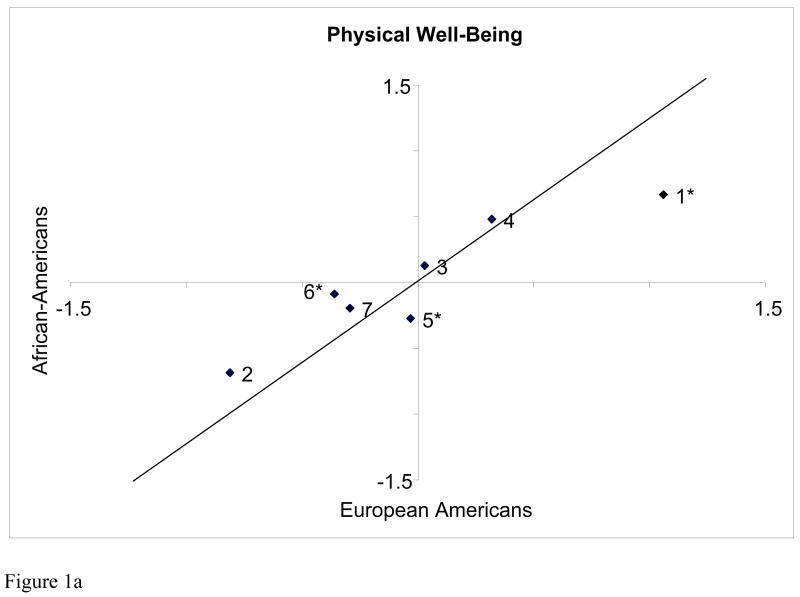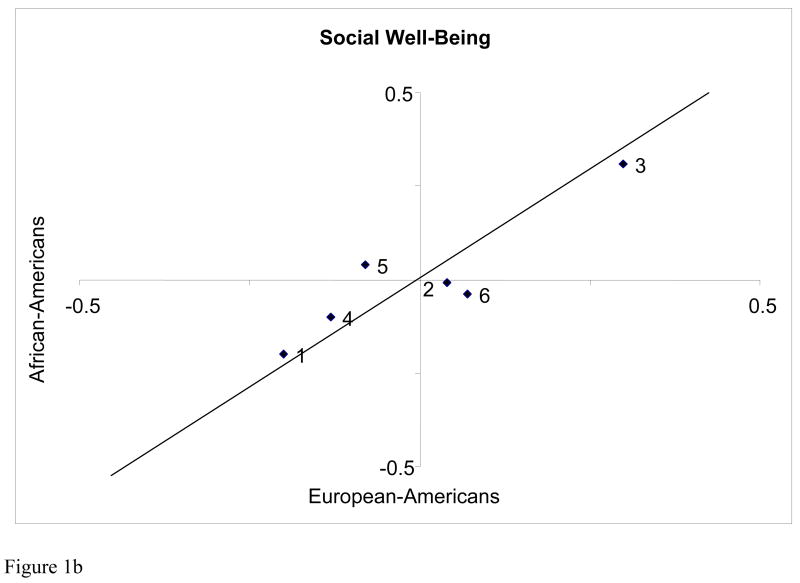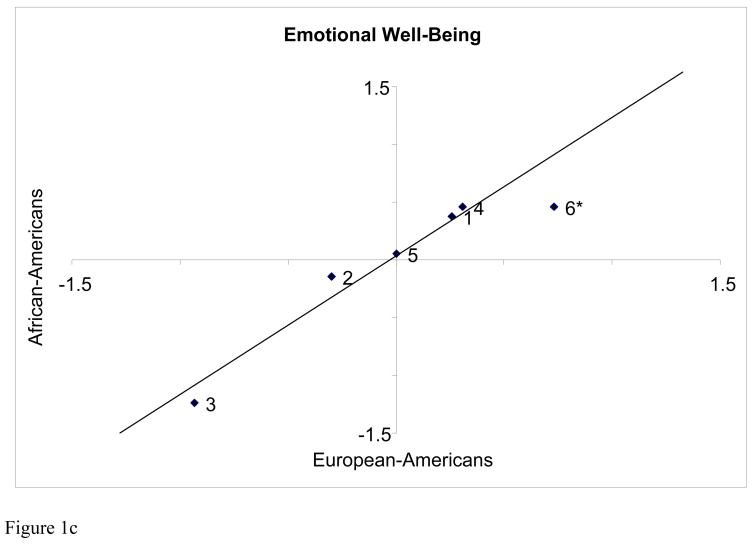Figures 1a to 1d. Plots of item calibrations for each subscale of the FACT-G.
The X axis represents item calibrations for European-American participants and the Y axis represents item calibrations for African-American participants. The farther the item is located from the reference line, the larger the magnitude of differential item functioning (DIF). Labels for items are abbreviated. Items with asterisks indicate that the items were identified as having DIF.
Figure 1a. Physical Well-Being
1 = “I have a lack of energy”, 2 = “I have nausea”, 3 = “Because of my physical condition, I have trouble meeting the needs of my family”, 4 = “I have pain”, 5 = “I am bothered by side effects of treatment”, 6= “I feel ill”, 7 = “I am forced to spend time in bed”
Figure 1b. Social Well-Being
1 = “I feel distant from my friends”, 2 = “I get emotional support from my family”, 3 = “I get support from my friends and neighbors”, 4 = “My family has accepted my illness”, 5 = “Family communication about my illness is poor”, 6 = “I feel close to my partner”
Figure 1c. Emotional Well-Being
1 = “I feel sad”, 2 = “I am proud of how I’m coping with my illness”, 3 = “I am losing hope in the fight against my illness”, 4 = “I feel nervous”, 5 = “I worry about dying”, 6 = “I worry that my condition will get worse”
Figure 1d. Functional Well-Being
1 = “I am able to work”, 2 = “My work is fulfilling”, 3 = “I am able to enjoy life”, 4 = “I have accepted my illness”, 5 = “I am sleeping well”, 6 = “I am enjoying the things I usually do for fun”, 7 = “I am content with the quality of my life right now”




